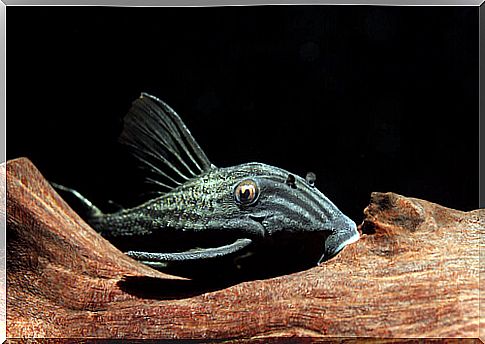Everything You Need To Know About The Wood-eating Fish

Discovering the wood-eating fish has been a major scientific discovery. Although other species of xylophagous fish were already known, their appearance in the Santa Ana River of the Peruvian Amazon rainforest has made it possible to study this species in greater detail.
The indigenous population of the sector has always known and enjoyed the benefits of this fish. It is one of the fish that the inhabitants of the place consume the most. They prepare it in soup or barbecue and eat the meat attached to the shell. There they call it giant carachama, because this catfish can measure up to 80 centimeters in length.
The species, discovered about a decade ago, is part of the Panaque genus . Almost all the catfish that sustain themselves on wood are classified there. The shape of their teeth is oval, similar to a spoon, and it is covered with a kind of very firm armor that protects them.
Do they really eat wood?
Likewise, like the other species of xylophagous fish that had already been discovered previously, the Peruvian catfish uses wood to extract nutrients that provide it with energy. To do this, it uses four jaws that, when closed, have the ability to move in various directions. This is how they crush the wood and absorb its food.

The giant cacharama has a dentition pattern that is unique in its kind, according to the scientists involved in their study. However, it has not yet been defined if they only absorb the nutrients from the decomposed wood present in the river or if they digest it. The first investigations seem to suggest that this fish has in its intestine a group of bacteria that are in charge of processing the cellulose of the wood.
The digestion of the wood-eating fish takes at least four hours, although it does not ingest large chips, but small chips and some particles from the trees degraded by moisture, present in its habitat.
Other characteristics of the wood-eating fish
A very curious and surprising fact is that these fish do not have scales. Its body is protected by a cuirass or armor composed of very hard plates, hence it is also known by the name of armored catfish.
Its habitat is limited to the small rivers distributed in the upper Amazon. For now, only sightings of this specimen have been made in Peruvian waters. Even so, its presence in other Latin American waters is not ruled out.
The researchers think that the wood-eating fish’s diet evolved out of competition for food. Observing the habitat where this species was found, the lack of substrates and other nutrients can be evidenced. There are also no rocks where they can absorb food, so getting it from decaying trees has been the best option.

Likewise, it was known that they not only subsist on wood intake. Wood-eating fish additionally feed on algae, crustaceans, plant debris, and other microorganisms. These foods are obtained by scraping the surfaces around them.
Some relatives already discovered
The authorities of the Alto Purús National Park, located in the Peruvian jungle and on the border with Brazil, have reported the presence of at least a dozen species similar to the wood-eating fish. Scientists from the Peruvian region report the existence of 12 fish with similar characteristics. These species are distributed in other hydrographic basins of the South American continent.
Most of these species are endemic and the groups are considered very small. However, the area continues to be investigated, especially when the rainy season ceases and the riverbed becomes more favorable.
There are also about 700 species of this type of fish that feed by scraping organic matter from other types of surfaces. But the wood-eating fish has the ability to dig into previously inaccessible places with its jaws.
The rows of teeth, called odontodes, are also thought to serve these animals as a show of power in territorial fights with other invasive species. A kind of menacing dance has been observed when other fish appear on your land. However, the effectiveness of that show of strength or whether it affects other aspects has not been determined.









